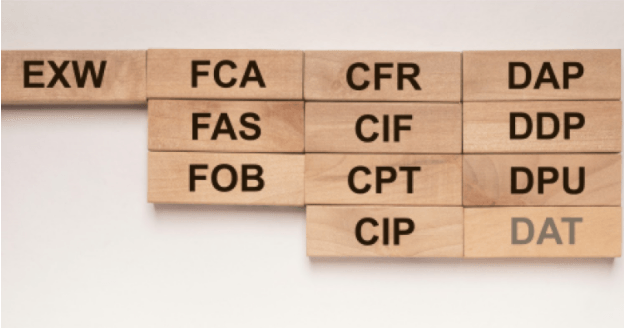
Door-to-Door, Door-to-Port, Port-to-Port, Port-to-Door
A freight forwarder's guide for you to understand several types of movements
Shipping internationally can be an overwhelming experience, but luckily, there are freight forwarders offering different service and movement types to suit the needs and preferences of different importers or exporters. This is where all the terms like door-to-door, door-to-port, port-to-port, and port-to-door movement types come in.
While it’s possible to infer what they are from their names, there is much more you need to inform yourself about when it comes to these different movement types. Learn how these work, what they are used for, pros and cons, as well as the suitable Incoterms to use for each movement type in this comprehensive article.

The Different Movement Types
Door-to-Door Shipping
In the door-to-door movement type, the freight forwarder handles most of the transport process and leaves little responsibility for the importer and exporter. The freight forwarder picks up the goods from the door or premises of the seller/ exporter and delivers them to the door or premises of the buyer/ importer.
This movement type requires the freight forwarder to make use of multiple transportations, which usually include trucks and vessels. Because this is a more direct and comprehensive option, it’s typically more expensive compared to other movement types. But the benefit is evident, considering that it provides convenience for the exporter and importer, relieving them of the responsibility of contracting their own transport services.
Door-to-Port Shipping
The door-to-port shipping term refers to the middle course of door-to-door and port-to-port shipping. The freight forwarder takes charge of the pre-carriage and main run of the shipping process.
This means that the goods will be picked up at the exporter’s premises and delivered to the ocean port or airport of origin. The freight forwarder will use multi-modal transport, such as a truck and vessel to handle the beginning of the shipping process. The importer will be in charge of inland transport at the destination port.
The door-to-port international shipping type is favorable for exporters who don’t have the capacity to arrange transport from their premises to the selected port of origin. But it is essential that the importer on the other end of the carriage has the means to arrange inland transport at the destination.
This movement type is beneficial for exporters because they have the liberty to decide their mode of transport for international shipping. The freight forwarder can also offer solutions tailored to their needs.
Port-to-Port Shipping
In the port-to-port shipping movement type, the freight forwarder only moves the cargo or goods from the airport or ocean port in the origin country to the airport or ocean port in the destination country. The goods are usually shipped in containers, either via less than container load or full container load.
The freight forwarder or carrier does not take charge of inland transport at origin or destination. This responsibility is on the part of the importer or exporter. This shipping service offers the shortest movement that the freight forwarder is responsible for. Because of that, it’s the cheapest movement type, requiring payment for only the middle leg of the shipping process, i.e. from the port of origin to the port of destination. However, it is also the shipping option that carries the most unpredictability, given that the middle leg of the shipping process is where most precarious situations happen.
Port-to-port shipments are best for shippers who are experienced and knowledgeable about the ins and outs of the shipping process. Because they know how to navigate international shipping, they can take charge of managing the needed documentation, carrying our customs clearance requirements both at origin and destination and arranging for inland transportation services.
When choosing the port-to-port movement type, it’s recommended that importers and exporters take the following factors into consideration:
Inland transport - The exporter will have to arrange transportation from their premises to the port of origin. This is the same case with importers who have to arrange the transport of the goods from the port of destination to their premises.
Port schedule - The exporter is in charge of ensuring that they know the schedules of transport and make sure that they deliver the goods at the right time. Some schedules to take note of include the transit schedule and the port’s operating hours.
Customs clearance - In port-to-port shipping, the exporter handles customs clearance at origin and shoulders the costs. This can prove to be a tedious process, especially with all the paperwork involved, which is why it’s recommended to hire a customs broker at origin and destination.
Cargo insurance - Port-to-port shipping services only include a minimum coverage on carrier liability. Exporters should obtain their own cargo insurance to protect themselves in case of loss or damage to the goods during shipment.
Local charges - Port-to-port shipping costs also do not include the costs of local charges. Exporters and importers would have to shoulder bill of lading release fees, wharfage, and other port charges.
Port-to-Door Shipping
In the port-to-door movement type, the transportation that the freight forwarder is in charge of begins only at the port of destination and ends when the goods have been delivered to the warehouse or premises of the importer. The freight forwarder takes charge of the inland transport at the destination to complete the shipment.
Movement Types and Incoterms

The differences between these movement types call for the use of different Incoterms. Knowing the best Incoterms to use for particular shipments can allow exporters and importers to further optimize their shipments and determine who is responsible for the goods during transport.
Door-to-Door Incoterm
The best Incoterm to use for the door-to-door movement type is the DAP Incoterm or Delivered at Place. This obligates the seller to deliver the goods at the destination nominated by the buyer. Through door-to-door shipping, the seller can guarantee that the goods are delivered and shoulder the costs for the entirety of the shipping process.
Door-to-Port Incoterm
The best Incoterms to use in door-to-port shipping are the following:
DPU (Delivered at Place) - The cost and risks in door-to-port shipping are shouldered by the seller, making the DPU incoterm suitable and the simplest option.
CIP (Carriage and Insurance Paid To) - CIP divides the risks and costs to the seller and the buyer, with the former being responsible until the goods are unloaded. The seller also obtains insurance to cover the transport from door to port.
CPT (Carriage Paid To) - In this Incoterm, the seller bears responsibility until the goods are loaded and the buyer is in charge of the inland transport at the destination, similar to how door-to-port shipping works.
CFR (Cost and Freight) / CIF (Cost, Insurance, and Freight) - The buyer is responsible for contracting carriage and inland transport at the destination. They should also obtain insurance to cover the transport from door to port in case of CIF.
Port-to-Port Incoterm
For port-to-port shipping, it’s recommended that sellers use the CIF Incoterm, or Cost, Insurance, and Freight. Because they are responsible for bringing the goods to the port of destination and transfers risks when they load the goods to the shipping vessel, the port-to-port movement type gives them access to the port of origin and the freight forwarder handles the middle leg of the process and delivers the goods to the destination port.
Port-to-Door Incoterm
Incoterms where the seller is responsible for ensuring the goods are delivered to the buyer’s premises suit the port-to-door movement type the best. These include:
CPT (Carriage Paid To), where the seller must make the goods available at the buyer’s chosen location,
DDP (Delivery Duty Paid), where the seller must deliver the goods to the buyer’s warehouse or premises.


